Vowel harmony and noun inflection in Caucasian Urum
Vowel harmony and noun inflection in Caucasian Urum
Vowel harmony and noun inflection in Caucasian Urum
You also want an ePaper? Increase the reach of your titles
YUMPU automatically turns print PDFs into web optimized ePapers that Google loves.
opaque to vowel <strong>harmony</strong>. The difference to st<strong>and</strong>ard Turkish is illustrated <strong>in</strong> Table 5. Aswill become apparent further down <strong>in</strong> Section 5.3, the opacity to vowel <strong>harmony</strong> of the<strong>Urum</strong> 3 rd person possessive suffix only applies <strong>in</strong> word-f<strong>in</strong>al position (<strong>in</strong> an opensyllable). It seems very probable that the <strong>Caucasian</strong> <strong>Urum</strong> realization of the 3 rd personpossessive suffix can be related to the Turkish dialect of the speakers’ ancestors. Notethat <strong>in</strong> Old Turkic the possessive suffix –(s)i was <strong>in</strong>variable (see Johanson 1998:108,Anderson 1996). Dialects of the Trabzon area seem to have preserved archaic stages of<strong>harmony</strong> rules <strong>in</strong>clud<strong>in</strong>g the encod<strong>in</strong>g of the 3 rd person possessive <strong>and</strong> the accusative bymeans of /i/ (see examples <strong>in</strong> Brendemoen 1998:239). Evidence for variable <strong>and</strong> different<strong>harmony</strong> rules <strong>in</strong> comparison to contemporary st<strong>and</strong>ard Turkish can be found for EasternTurkish (Brockelmann 1954) <strong>and</strong> Ottoman Turkish (Kerslake 1998).Table 5. Realization of 3 rd person possessive suffix <strong>in</strong> <strong>Urum</strong> vs. St<strong>and</strong>ard Turkish<strong>Urum</strong> St<strong>and</strong>ard Turkishfront –round +high ii–high e+round +high üü–high öiback –round +high ıı–high a+round +high uu–high oF<strong>in</strong>ally we turn to the plural suffix -lAr <strong>and</strong> its realization <strong>in</strong> our elicitation study. Figure3 presents the results while (8) illustrates the prevail<strong>in</strong>g realization for each phonologicalcondition.(8) Results: Production plural suffix -lAr(a) front, -roundit-ler ‘dog-PL’, ev-ler ‘house-PL’(b) front, +roundüzüg-ler ‘r<strong>in</strong>g-PL’, göl-ler ‘lake-PL’


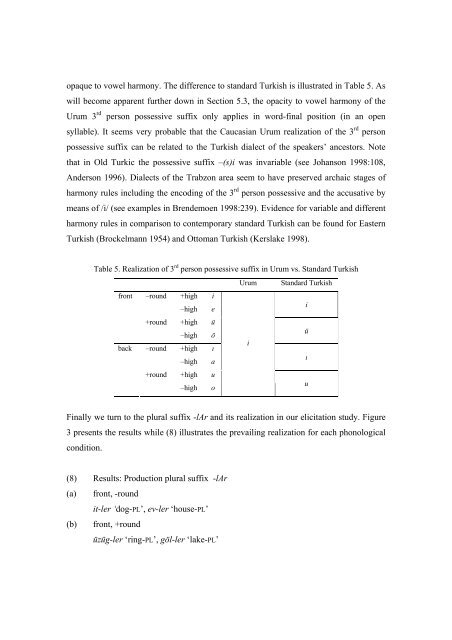
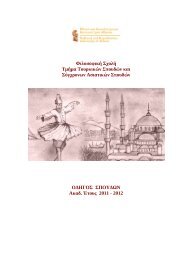
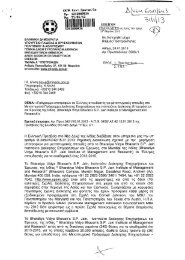
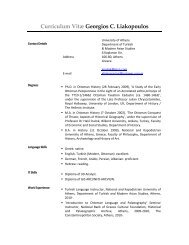


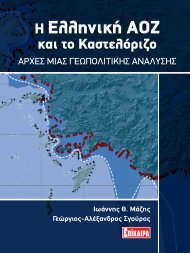
![Panagiotis C. Poulos[cv]](https://img.yumpu.com/6513871/1/190x245/panagiotis-c-pouloscv.jpg?quality=85)